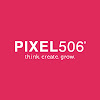
It’s 8am on Monday, and you enter your first meeting of the day with your cup of steaming coffee. It’s a strategy meeting. Your manager folds her hands, looks at each of you, and says “We need to adjust how we do things. From now on, we’re going to start designing based on trends.”
Maybe she gives you some guidelines, or suggests some sites to check out. Maybe she asks each of you to prepare a report for the next meeting about how your department can incorporate trends into your design strategy.
Whatever the case, you might be feeling a little anxious. Your boss is asking you to make a pretty big change, after all. Most people design based on what has worked for them in the past, or based on what they think a good idea is. But designing around trends is inherently very different. Trends, by definition, are constantly evolving. You might be thinking, “By the time I get used to something, it might change completely, right?” Don’t get “trend” confused with “fad.” Trends do evolve, but they are based on culture, and in turn affect culture. They aren’t something that just zips in and out of history. They have lasting impacts.
You have all of these questions swirling around your mind, so you go to your computer and immediately google “What is a trend?”
What Is A Trend?
Designing based on trends is nothing new. The word “trend” was coined in the 90’s, but was mostly used in certain social strata and circulated exclusively by economists. As time passed, the word has evolved and later used in the fashion industry and most recently in product design. Using the word “trend” has evolved from being a trend, to being an everyday part of our language.
People in the the trend design community refer to trends as part of the “Zeitgeist” or “spirit of the age”. This basically means trends are part of what shapes our entire epoch. They influence, and in turn are influenced, by consumption data, production, social understandings and agreements, among others.
When Do You Use Trends In Design?
These days, we use trends when creating, basically anything. If you were a part of the meeting we talked about in the first paragraphs, you could be a designer, digital marketer, programmer, copywriter, product designer, or UX strategist. We’re designing everything based on trends, from digital marketing strategies, to UIs, to physical products. It’s just not possible to design anything without paying attention to the current trends.
Why? Simply put, trends are patterns that drive consumers. This isn’t necessarily saying that a product is going to be more or less successful if it is based on a current trend. There are too many other factors to take into consideration to say that definitively.
What Are The Benefits Of Designing Based On Trends?
However, if a company, or a department, is dedicated to this kind of trend hunting and trend based designing, you know they are on top of things and in a great position to innovate. They’ll be able to offer so much more than other, more old-fashioned creation processes.
Following trends means you are actively up-to-date with what is going on in the world and in your particular market. Whether it is technology, fashion, strategy, or any other industry, you should be on top of what is considered “vogue” for the moment. This allows you to, not only design new products, but optimize your old products and services according to the demand.
So How Do You Design Based On A Trend?
So what does this mean for those of you in the meeting we started out with? This means that you are going to be doing some exhaustive research into trends within your market, and even trends without. Fashion trends will inspire product packaging design. Political or cultural trends will impact your brand message strategy. I’m not really sure how food trends might impact technology, but I’m sure there’s a way!
The report that you bring to the next meeting is going to outline how you are planning to create products that will generate demand and sales for your company. You are going to start thinking in a better way, how to reach your target market based on what is happening out there in real life. You don’t have to be nervous about these changes, but you do have to put the work into changing your design perspectives.
About Pixel506
Pixel506 is a digital marketing, user experience, and software development company that specializes in combining these three crucial components into digital solutions that improve, elevate, and grow your company. We’re all about finding the right solution that will bring your company the most value.
